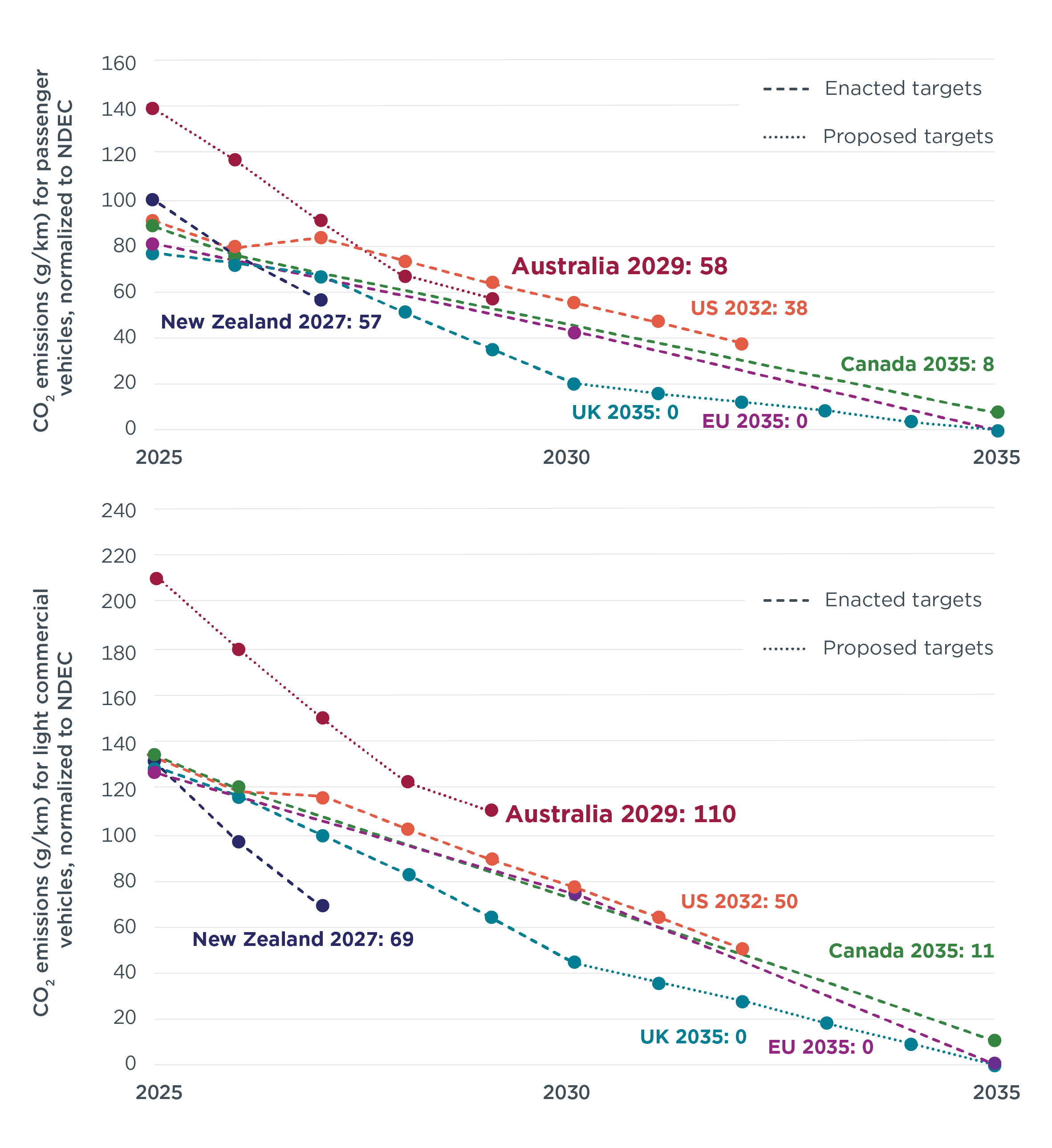Fuel efficiency standards to decarbonize Australia’s light-duty vehicles
Policy Brief
Australia adopts first-ever CO2 standards for light vehicles
After years of efforts to introduce mandatory fuel efficiency measures, the Australian Government has reached a historic milestone in finalizing the New Vehicle Efficiency Standard (NVES), the country’s first carbon dioxide (CO2) emission standards for new light-duty vehicles. In this brief, the authors summarize the key features of the NVES, compare the stringency level of emissions targets with those set in other major vehicle markets, and identify opportunities for improvement in the first regulatory review scheduled for 2026.
The NVES sets annual gCO2/km emission targets from 2025 to 2029 for new passenger cars, sport utility vehicles (SUVs), utility vehicles (utes), and vans. The emission targets are set under the New European Driving Cycle (NEDC) test procedure and will apply starting on January 1, 2025.

Figure. CO2 emission targets for light-duty vehicles in major global vehicle markets (normalized to New European Driving Cycle-equivalent CO2 emissions)
This rule will help to put Australia on track toward its 2050 decarbonization goal, complement the national electric vehicle strategy, provide fuel cost savings for Australian consumers, and help ensure that the latest technology and high-efficiency vehicles are brought to the Australian market. Some of the most important areas for potential improvement in the 2026 review include post-2029 targets that should get to 0 gCO2/km or 100% zero-emission vehicle sales by 2035 and regulating SUVs under the passenger vehicle class.
